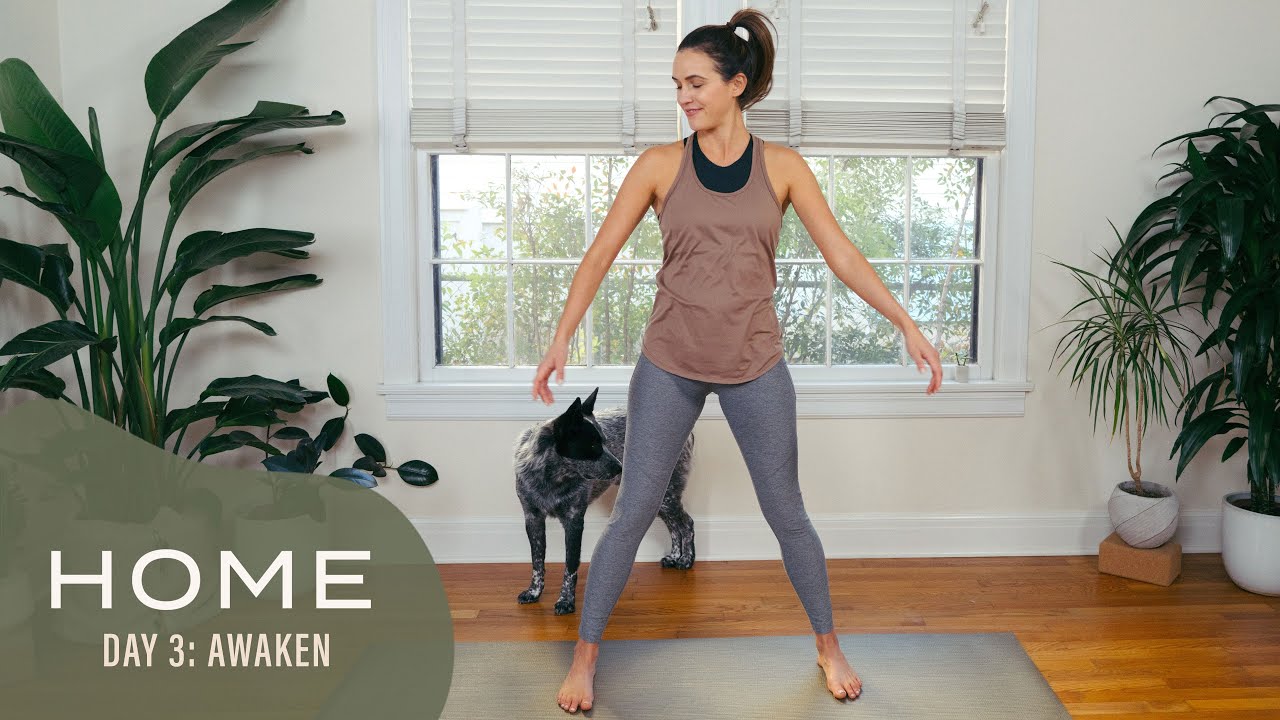
It can be hard to find the right pose for beginners when starting yoga. The goal is to achieve a stretch that will feel good and strengthen your body. Even though many poses can seem difficult for beginners there are some basic steps that can be done to get the most from your practice. Here are three fundamental poses that beginners should master when starting yoga. Once you've mastered these basic poses, you can move on to more challenging poses.
The connection between awareness, breath and breathing is one of the greatest benefits of beginner yoga. Getting in touch with your breath can help you sleep better, reduce stress, and experience more present moment awareness. This guide will make a big difference in your yoga practice. Here are a few ways to start your beginner's yoga routine. These tips will help you get started. Once you know these tips, it's easy to start a class.
For beginners, the shoulder stand is a great exercise. This exercise improves your flexibility and strength, and can be used to prepare for more difficult poses. It reverses the effects from forward rounded shoulder postures. Start by pressing your hands up, rolling your shoulders back and then extending your back. Turn your gaze upward and focus on your feet to maintain balance. You will soon be able finish your first few attempts and build your strength.

A plank pose makes a great start to yoga. This variation is the plank. Your elbows should be under your hips. Although it may seem difficult at first, this will help strengthen your arms as well as engage your core muscles. Over the next few days, you will be able master more advanced versions. If you still have questions, schedule a private session with a professional or take part in a workshop.
There are many options available for beginners yoga classes. These videos are offered by several YouTube channels. These videos are approximately seven to forty minutes long and provide basic tips. After you have learned the fundamental postures, you are ready to take a 60 minute class. Make sure you find a teacher that is familiar with your body. So you can do a good job. The classes are friendly, and it is easy to understand.
Beginners should bring a mat and a towel to a yoga class. You can find props at most yoga studios. However, you may need to check online to locate the best. Talking to a yoga instructor before you start is advisable. Private sessions are an option for those who don't like the idea of being in a large group. They can help you modify any pose, and prevent injury.
This type of class is not meant to intimidate beginners. There's no need to be afraid of it. It's easy to learn yoga and reap its benefits. You'll see changes in your body after a few weeks. It's important to follow your instructor's instructions. You'll have to do your homework, and make sure you have a proper mat. You'll get the most out your workouts if you have a proper mat.

Beginers should try as many different poses as they can in one day. The easiest and most familiar poses are the best. You'll be surprised how many yoga poses you can learn! Just be sure to listen to your body and modify the poses if necessary. If you have a wrist injury, or you're worried about getting an injury, start slowly and work your way up. You will soon feel comfortable practicing these poses.
It doesn't have to be difficult for beginners to do yoga poses. You can experiment with your poses and try out different poses to find which one is the easiest to do. Starting with some simple and straightforward poses that are easy to understand, will make it easier for everyone. Yoga can be done on the beach, or you can lay on the beach. In either case, you should not try to do more than a couple of poses.
FAQ
Do Men Need A Gym Membership?
For men, a gym membership is not required. But, if you do join a gym, it will make your money go further.
Many gyms offer free trial memberships so you can try the facilities out before paying for anything.
You can use the gym at any time you want, and it doesn't cost anything. You can cancel your membership as soon as you decide whether you love or hate it.
What is a good schedule for a 7-day work out?
A seven day exercise program should include cardiovascular training (running or biking), strength exercises (using freeweights, weight machines) and one flexibility/core workout. Each activity must be completed at least once per week. Each session should not last more than 45 minutes.
Cardiovascular Exercises: Running, biking, swimming
Your goal is to exercise at least 60 minutes each week. Aim for 75 minutes per week to get the best results. Cardio exercises can help improve blood flow and stimulate muscle growth.
Strength Training
Cardio exercises work on the heart and lungs. Strength training works on the muscles and bones. Strength training helps you burn calories even while resting.
Flexibility and Core Workouts
You can strengthen your entire body by strengthening flexibility and core exercises. Both yoga and Pilates are excellent options.
Is Cardio Exercise Good Or Bad For Your Health?
Cardiovascular exercise offers many benefits. It improves blood flow, strengthens your heart muscle and increases stamina.
Cardiovascular exercise includes running, biking, hiking, swimming, tennis, basketball, soccer, volleyball, football, etc.
It is important to keep in mind that cardio exercises should not only be performed at a high level of intensity, but also at low levels. Doing this could lead to injury.
The cardiovascular exercise should only be performed if you feel good.
It is important not to push yourself beyond your limits. If you do, you might injure your self.
Cardiovascular exercise is best done warm-up first. Gradually increase the intensity.
Always listen to your body. If you feel pain, stop doing cardio exercise immediately.
It is also advisable to rest after a cardiovascular workout. This will allow your muscles to rest.
Cardiovascular exercise is a great way to lose weight.
It is the most effective way to burn calories and reduce belly fat.
How do I build muscle quickly?
To build muscle quickly, eat healthy foods and exercise regularly.
Mornings are the best time to workout.
Try exercises like squats and bench presses.
Take a look at different weight training options and make sure to drink plenty of fluids throughout the day.
Statistics
- The PRS enabled risk stratification for overall prostate cancer and lethal disease with a four-fold difference between men in the highest and lowest quartiles (HR, 4.32; 95% confidence interval [CI], 3.16-5.89). (pubmed.ncbi.nlm.nih.gov)
- Are You One of the 20% of Guys (mh.co.za)
- According to the American Academy of Dermatology (AAD), men over 50 are at a heightened risk of developing it. (healthline.com)
- Get free shipping and 25% off today. (healthline.com)
- By John Thompson Take a whopping 38% off a set of PowerBlock Pros. (menshealth.com)
External Links
How To
What's the best food for men?
Men should consume five portions of fruits and veggies per day. They should avoid fast food and limit red meat.
Fruits and veggies are packed with antioxidants that protect against cancer, cardiovascular disease, and other diseases.
Vegetables include broccoli, cauliflower, carrots, spinach, tomatoes, peppers, cucumbers, lettuce, mushrooms, etc.
Also, beans and peas are rich in protein and fiber.
Nuts and seeds are excellent sources of omega-3 fatty acids. Omega-3 s are essential for brain function and hormone production.
Fish is another great source of omega-3s. The mercury in fish is higher than that of most meats. However, fish liver oil does contain fewer toxins.
The average growth and development of the body is dependent on Omega-6s, which are found in vegetable oils, such as corn, soybeans, sunflower, safflower, and cottonseed oils.
Poultry is a good source of lean protein. Chicken breast is the most nutritious meat.
Lean beef contains low amounts of saturated fats and cholesterol. You should limit your intake of red meat as it can increase your risk for prostate cancer.
Avoid sausages and hot dog. These processed meats contain nitrates that can cause cancer.
There is no doubt that exercise is essential for maintaining overall health. What if you already exercise regularly? Is there anything else you can do to maintain or improve your physical condition?
Yes! You can do many things to ensure you get the most out your workouts. Here are some tips on how to maximize your workout:
Begin slowly. It is possible to injure your self if you push too hard during your first session. Start slow and build your intensity slowly.
Stretch before and afterwards. Stretching will help loosen tight muscles, reduce soreness, and improve flexibility. Stretching can be done standing, lying down, or walking.
Cool down. This is especially important if you're doing cardio exercises. Your body needs time to recover between sessions, so it doesn't become tiring. Take deep, slow breaths to cool down.
Hydrate. Hydration can help you stay hydrated and reduce muscle cramps. Sports drinks, however, can be beneficial.
Make sure you eat healthy. Get enough calories in each day. Regular meals throughout the day can help you stay focused and energized during your workouts.
Get some rest. Get enough rest to feel refreshed and ready to tackle your next training session. Sleep is also crucial for repairing damaged tissues.